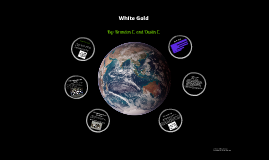White Gold
Transcript: Comparison with Other Precious Metals Compared to yellow gold, white gold offers a modern aesthetic and greater durability due to its alloy composition. It also often has a higher price point due to the cost of its additional metals, such as palladium. Care and Maintenance of White Gold Composition of White Gold Introduction to White Gold Typically, white gold contains at least 75% gold content, combined with metals like palladium or nickel for color and durability. The exact composition can vary, influencing the metal's final color and properties as well as its hypoallergenic nature. Effective Cleaning Methods White gold is a popular precious metal known for its lustrous silver-white appearance and durability. Often used in high-end jewelry, its unique properties set it apart from traditional yellow gold. Proper care and maintenance are essential for preserving the beauty and longevity of white gold items. Regular cleaning and mindful storage can prevent tarnishing, while timely repairs ensure the integrity of jewelry. To clean white gold, use a mild soap solution with warm water. Soft cloths or toothbrushes can help remove dirt. Professional cleaning services can provide deep cleaning without damaging the metal. Definition of White Gold White gold is an alloy consisting primarily of gold mixed with other metals such as palladium, nickel, or silver. This combination delivers a brilliant shine and enhances the metal's strength, making it ideal for jewelry applications. Smart Storage Tips Repair and Replating Essentials Store white gold jewelry separately to avoid scratches. Use soft pouches or lined boxes. Keeping jewelry in a cool, dry place away from direct sunlight helps prevent tarnishing. White gold typically undergoes rhodium plating to enhance its appearance. Over time, this plating wears off; however, professionals can replate and repair damaged pieces to restore their original shine. Hypoallergenic Qualities White Gold Resistance to Tarnish White gold is plated with rhodium, which significantly increases its resistance to tarnish and wear. This property ensures that white gold pieces retain their brilliance and do not require frequent polishing compared to traditional gold. White gold is often alloyed with metals like palladium or nickel, enhancing its hypoallergenic properties. This characteristic makes it suitable for individuals with sensitive skin, minimizing the risk of allergic reactions. Aesthetic Appeal Applications and Uses of White Gold Chemical Properties The lustrous finish of white gold enhances the visual appeal of jewelry. Its bright, silvery color complements a variety of gemstones, making it an ideal choice for sophisticated and elegant designs in rings, necklaces, and more. The chemical stability of white gold is attributed to its alloy composition, which minimizes reactivity with air and moisture. It often contains nickel or palladium, contributing to a lower risk of corrosion and enhancing its longevity in various applications. Durability and Strength Physical Properties Benefits of White Gold White gold is prized for its compelling benefits in jewelry and other applications. Its unique aesthetic, hypoallergenic properties, and resistance to tarnish make it a preferred choice among consumers and manufacturers alike. White gold is renowned for its exceptional durability and strength, making it an ideal choice for everyday jewelry. Its resistance to wear and damage is a result of the alloying process, which enhances hardness and resilience against daily impacts and scratches. White gold possesses a silvery-white appearance due to its alloying with metals like palladium or nickel. Its weight is comparable to yellow gold, making it a substantial choice for jewelry while having a higher resistance to scratching and tarnishing compared to its yellow counterpart. Properties of White Gold Understanding the properties of white gold reveals its allure and application in various industries. This section examines its physical, chemical, and durability attributes, illustrating its status as a favored precious metal. Future Trends in White Gold Usage Closing Thoughts on White Gold's Value The demand for white gold is expected to rise, driven by the growth of sustainable jewelry practices and innovations in alloying techniques. Eco-conscious consumers will increasingly seek jewelry made from ethically sourced white gold. White gold's unique combination of beauty and durability contributes significantly to its value in the marketplace. Its versatility in design and enduring popularity among consumers solidify its status as a timeless investment. Watches Summary of Key Points In high-end watch manufacturing, white gold is often utilized for its aesthetic appeal and corrosion resistance. Luxury watches featuring white gold cases and bands maintain their elegance and longevity. White gold combines yellow gold with metals like palladium or nickel, enhancing strength and resistance to tarnish. It is

















